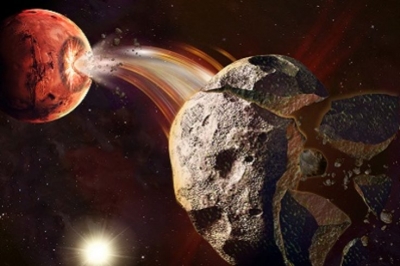
In astronomy, a trojan is a small celestial body (mostly asteroids) that shares the orbit of a larger one, remaining in a stable orbit approximately 60° ahead or behind the main body near one of its Lagrangian points L4 and L5. Trojans can share the orbits of planets or of large moons.
In the Solar System, most known trojans share the orbit of Jupiter. They are divided into the Greek camp at L4 (ahead of Jupiter) and the Trojan camp at L5 (trailing Jupiter). More than a million Jupiter trojans larger than one kilometer are thought to exist, of which more than 7,000 are currently catalogued. In other planetary orbits only nine Mars trojans, 28 Neptune trojans, two Uranus trojans, and a single Earth trojan, have been found to date. A temporary Venus trojan is also known. Numerical orbital dynamics stability simulations indicate that Saturn and Uranus probably do not have any primordial trojans.
The same arrangement can appear when the primary object is a planet and the secondary is one of its moons, whereby much smaller trojan moons can share its orbit. All known trojan moons are part of the Saturn system. Telesto and Calypso are trojans of Tethys, and Helene and Polydeuces of Dione.
Picture Credit : Google




